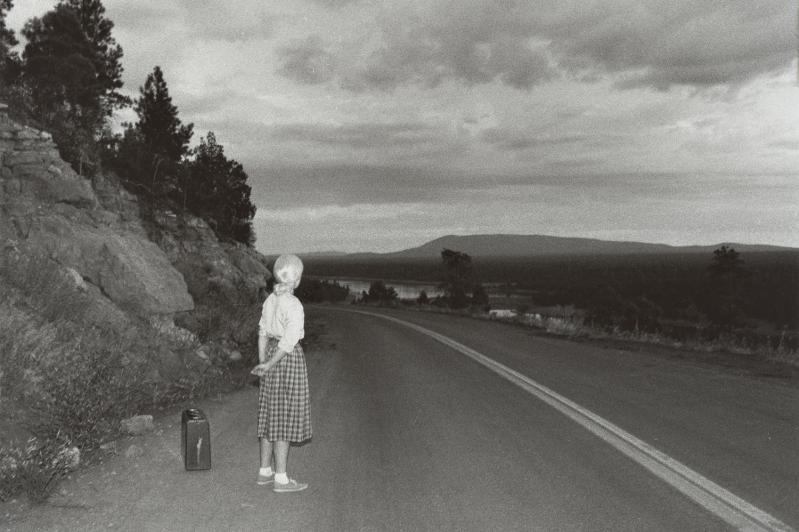"Photography's Last Century: The Ann Tenenbaum and Thomas H. Lee Collection," which opened on March 10 at the Metropolitan Museum of Art, is remarkable for several reasons. One is the almost immediate inaccessibility it suffered once regional closures took effect a week later. As such, it feels like a time capsule of those last uncertain days of a world on the edge of Covid.
Then there is the collection itself, a promised gift to the museum by the collectors on the occasion of the museum's 150th anniversary. The selection of 20th-century images demonstrates a highly individual connoisseurship, which for the most part eschews the greatest hits or the market's imprimatur even when the selections are from some of most respected and sought-after blue-chip artists.
The collection is perfect for a museum. It allows us to assess photographers, many of them female, and many at early or lesser-known stages of their careers, in a more academic but no less visually rewarding context.
With limited access and visitors still shy to return to indoor public settings, the museum will offer a unique event to experience the show virtually by exploring its themes through music and readings. "Rosanne Cash and A.M. Homes: Eye of the Collector" is a personalized tribute engaged with the theme of home evident in many of the works in the exhibition.
The museum has a short virtual tour of the show led by Jeff Rosenheim, its head photography curator, which is well worth watching. Tuesday's presentation is different. As words are read by Ms. Homes, an author, or songs performed by Ms. Cash, the photographs stream along with them, providing a visual grounding as they create their own separate artwork.
Individual photos repeat throughout, allowing the viewer to re-engage with them in a way not often experienced in a regular museum visit or a virtual setting. It will be a refreshing way to experience the art at a time when most virtual showings and online viewing rooms are feeling stale.
For those who can get to the museum, there is much to explore, starting with the earliest work in the show, a Paul Strand photograph from 1916, "From the Viaduct, New York, 1916." Strand's images are always arresting, but in this work he seems to channel both the angularity of European Cubists as well as the banal subjects of the Ashcan School. He does so in a new modern language that would become more common a few years later with the Precisionist painters. It is rich in contour and its striking use of light.
Along with an early work from 1976 that opens the exhibition, one of the showcase photos is an "Untitled Film Still" from 1979 by Cindy Sherman. Ms. Sherman, a longtime denizen of the South Fork, broke through with fictional scenes employing tropes from classic cinema. Here, she stands on a quiet atmospheric mountain highway, dressed in a classic button-down, skirt, bobby socks, and Keds with a suitcase nearby. There is a palpable sense of the subject being between two worlds and waiting for the next chapter to begin. Like several photographs in these rooms, it has a strong resonance to our own in-between times.
Gregory Crewdson borrows from film, too. His photographs are the result of full crews who assemble a narrative out of actors, complex settings, and props. In "Untitled," from 2005, the subject, who is seen in her bedroom, seems to have just suffered a mental break. She clutches the root ball of a rosebush in her hands, with most of the plant at her side on the bed. Along with a table full of pills, a wake of the bush's remnants, which starts in another room, hints at true pathos.
Hiroshi Sugimoto's long-exposure captures of entire films playing in darkened theaters were made years ago. Yet the stark emptiness of the space and the resulting white screens produce another salient trope for our time. Andreas Gursky's empty Prada store, "Prada II," from 1996, has similar reverberations for anyone who has walked in an upscale commercial district during the shutdown.
A further reminder that the issues inherent in this summer's Black Lives Matter movement are ingrained in history is evident in the work of Robert Frank and Zanele Muholi. Mickalene Thomas's 2006 "(If Loving You Is Wrong) I Don't Want to Be Right" explores issues of race and gender while the subject asserts her own gaze as supreme as she stares down the viewer in a powerful portrayal.
Other recurrent themes include a number of nudes from early masters such as Man Ray and Edward Weston. There are also more artists of local note, with Richard Avedon, Andy Warhol, Richard Prince, Robert Gober, and even an early Andre Kertesz taken in his native Hungary before he came to Paris and then America, all in the mix. Additionally, the collectors have a house in East Hampton.
The exhibition will remain on view through Nov. 30. Tuesday night's presentation will take place at 7 and is free on the museum's Facebook page or YouTube channel.




